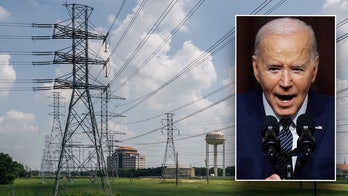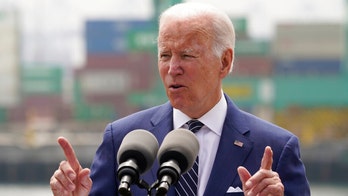
Shown here are oil and gas pipelines running into Alyeska's trans-Alaska oil pipeline pump station in Deadhorse, Alaska. (AP)
While most Americans are cursing the high price of gas, residents in one state have reason to celebrate.
Alaska gets 90 percent of its state revenue from oil production taxes. When the price of oil goes up, so does the amount paid to the state. Bryan Butcher, Alaska's Revenue Commissioner, said he's anticipating a tax windfall of $3.4 billion this year, adding to a healthy reserve fund.
"We're looking at a surplus of approximately $15 billion in reserve that the governor and Legislature could tap if need be," he said.
That's a far cry from what's happening in other states around the country. Most governors are being forced to slash spending to fill huge budget deficits. In Alaska, in addition to the reserve fund, the state has a Permanent Fund currently worth $40 billion. Established by the Legislature when oil started flowing down the Trans Alaska Pipeline, the Permanent Fund pays out dividends to Alaskans annually. Last year each man, woman and child received $1,300.
Oil revenue also allows Alaska to build roads, educate kids and provide health care without collecting a state sales tax or income tax.
"Any time (the price of oil) gets up high, my first thought is what's being paid out in rural Alaska, and my second thought is we'll be able to fund state government this year," Butcher said.
Despite sitting on top of so much oil, Alaskans still pay among the highest gas prices in the nation. The statewide average is currently $4.17 which is 24 cents higher than the national average. That's the part Alaska residents don't like.
"Everything is rising," Anchorage resident Rebecca Williams said. "You've got your groceries and all your other bills, and we're not getting any raises."
Other state residents admit they're still way ahead with the dividend checks and miniscule tax burden. Alaska's Department of Natural Resources Commissioner Dan Sullivan said the prices are high because the local gas market is small and remote.
"We have one refinery in the state," he said "And the economies of scale are such that large-scale production of gasoline does not happen here, so a lot of it has to come back."
Officials still know they are in an enviable budget position. Lawmakers are in Juneau figuring what to do with all the oil revenue. They're considering massive projects such as a natural gas pipeline and hydroelectric dam.
Most of the surplus, however, will go into a rainy day fund. Alaskans know every boom is followed by a bust. They remember oil plummeting to $9 per barrel in the late '80s and a decade later. The most recent swing took place in 2008. Alaska crude oil reached a record price of $147 per barrel. Within three months, the price had plunged to $30 a barrel.




